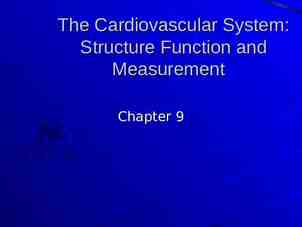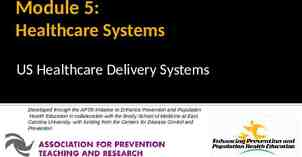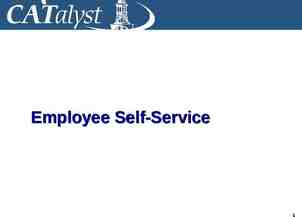The Process for Final Approval: Sitespecific Assessment and
24 Slides1.26 MB
The Process for Final Approval: Sitespecific Assessment and Validation Division of Long-Term Services and Supports Disabled and Elderly Health Programs Group Center for Medicaid and CHIP Services Module 1: Site-Specific Assessment, Validation and Outcomes
Objectives for Today’s Session Identify the 6 Key Components outlined by CMS in the Statewide Transition Plan (STP) for identification of Home and Community-Based Services (HCBS) settings, site-specific assessment and validation strategies. Learn how other states have developed strategies to avoid barriers/challenges. Self-assess the state’s current status on these components using commonly asked questions as a guide. Learn how to develop an action plan to address each of the components. 2
6 Key Components for Final Approval: Sitespecific Assessment and Validation (1 of 2) 1. The state identifies all settings where HCBS is delivered subject to the settings rule. 2. The identification of all settings addresses the scope of all settings subject to compliance review. 3. The site-specific assessment evaluates compliance with all key elements of the rule and meets threshold requirements. 3
6 Key Components for Final Approval: Sitespecific Assessment and Validation (2 of 2) 4. The site-specific assessment results can be considered valid and objective. 5. The site-specific assessment results are reported in a clear and simple manner to inform remediation. 6. The site-specific assessment results are summarized in a clear and detailed manner to identify aggregate results of settings compliance. 4
What is CMS Looking for in the STP Review? 5
Component 1: Identification of all HCBS Settings List all services under each HCBS authority. Identify all settings operating in each category of service. Use the same descriptors for the settings in the sitespecific assessment description as used in the systemic assessment (e.g. TBI Supportive Living; IDD Day Habilitation; Adult Day Health). Describe how the state ensured all individual settings have been identified for assessment. Describe how the state identified settings that are not HCBS or that are institutional in nature. 6
Component 2: Site-specific Assessment: Scope Settings considered to be an individual’s own home and therefore presumed to be HCB: o If a state is presuming one or more categories of settings to automatically comply with the rule (i.e. private homes), the state must describe how it came to that determination and what it will do to monitor compliance of this category over time. The annual case management visit can achieve this. Group Settings: o Any setting for which individuals are being grouped or clustered for the purpose of receiving an HCBS must be addressed by the state for compliance with the HCBS rule. 7
Individual, Private Homes Can be presumed to be in compliance if: Person is living in a privately owned or rented home or apartment with family members, friends or roommates; and The home is integrated in typical community neighborhoods where people not receiving HCBS reside; and The home is not owned by an unrelated caregiver who is paid for providing HCBS to the person. 8
Identification of Settings-State Example PA Office of Developmental Programs: 18 service locations licensed under 55 Pa. Code Chapter 5310 pertaining to Community Residential Rehabilitation Services for the Mentally Ill. 4036 service locations licensed under 55 Pa. Code Chapter 6400 pertaining to Community Homes for Individuals with an Intellectual Disability. 1093 service locations licensed under 55 Pa. Code Chapter 6500 pertaining to Family Living Homes. 539 unlicensed residential service locations where three or fewer people with an intellectual disability reside. 9
Component 3: Site-specific Assessment (1 of 2) The site-specific assessment evaluates compliance with all key elements of the rule. The site-specific assessment process meets threshold requirements that all settings are assessed for the HCBS rule in its entirety. 10
Site-specific Assessment (2 of 2) The STP should clearly describe how the state assessed each residential and non-residential setting for compliance with the settings rule. – Can be different strategies for different HCBS authorities and/or different types of settings. – Can assume certain settings are not compliant and move to remediation first. Site-specific assessment could then be addressed through on-going monitoring. Are there settings that are institutional in nature and automatically rise to the level of heightened scrutiny ? 11
Site-specific Assessment Strategies Provider self-assessment – Considerations: what percentage were completed; nonrespondents Participant surveys – Considerations: sample size, response rate and results should be tied to a specific setting On-site assessment – Licensing or certification reviews; case management reviews; MCO review; specialized HCBS settings review 12
Provider Self-assessment-State Example TN: Provider self-assessment Providers were required to include persons served, family members/representatives, advocates, and other stakeholders in their assessment process. Providers were required to include a description of their selfassessment process, including participation of the aforementioned persons. Providers who self-reported or were assessed upon review and validation to be noncompliant were required to submit a Provider Transition Plan identifying the area(s) of noncompliance and describing their proposed plan for coming into compliance along with associated time lines. 13
Component 4: Validation of Site-specific Assessment Using multiple methods of assessment mitigates disputes over findings and ensures due diligence. If provider self-assessment is used, there must be at least one other additional method employed to validate those findings: – – – – Participant surveys External Stakeholder review or surveys Desk reviews by state staff On-site reviews, existing or specialized If MCO’s or other entities are used that may have a conflict, there should be supplemental methods employed. 14
Validation-State Example DE DDS: – Provider self-assessment for residential and nonresidential settings (100% response) – Participant survey tied to setting offered to all recipients on an on-going basis (39% response rate at submission) – Desk review of self-assessment (100%) – On-site review (20% sample) 15
What Else to Consider in Validation? Did the state assess all elements of the settings rule? Was there at least one independent method of assessment for each setting? Were various methods combined to build confidence in results? Did the state clearly differentiate and explain any differences in the validation processes across systems? How are overall results of multiple question tools or the use of Likert scales evaluated for compliance with each key element of the rule? 16
Component 5: Reporting Findings Report aggregate outcomes of these activities including the type and number of settings that: o fully comply; o do not comply and require modifications; o cannot meet requirements and require removal from the program and/or transition of beneficiaries; and, o are presumptively not home and community-based including those the state will submit for heightened scrutiny review. 17
Component 6: Summary of Findings Summarize results in easily understood manner based on key elements of the rule to inform state remediation strategy. 18
Reporting of Findings: Common Problems Aggregate results by level of compliance is not broken out by setting type. Additional categories are provided by the state to describe the compliance results. The state does not describe how settings presumed to be institutional in nature have met the state’s standards for a setting to be considered home and community-based and will be submitted to CMS for a heightened scrutiny review. 19
Review Questions: Site-Specific Assessment and Validation (1 of 4) Did you accurately and clearly lay out all of the settings in each home and community-based authority where HCBS is delivered? Did you distinguish between settings under the rule (e.g., groups, individual’s own home)? Did you clearly lay out details of the state’s approach to conducting the assessment process, including methods, timelines, tools and who will conduct the process? 20
Review Questions: Site-Specific Assessment and Validation (2 of 4) Are you using provider self-assessments? If yes, did you address the process for handling nonrespondents to provider self-assessments? Did you engage individuals receiving services and/or consumer advocacy entities in the assessment process? – In what role? – How did you rectify discrepancies if any were found? Are there any categories of settings that you are automatically determining will require modifications to comply? Did you assess all settings subject to the rule? 21
Review Questions: Site-Specific Assessment and Validation (3 of 4) If you completed remediation first, did you complete an assessment of all elements of the rule post remediation? Did you identify in the STP, the methods or processes used to validate the findings from the site-specific assessments? Are the strategies identified sufficient? If provider self-assessments were used, did you provide at least one validation strategy to confirm results? Did you effectively combine various validation strategies to mitigate any perceived concerns? Did you ensure the independence of assessments? 22
Review Questions: Site-Specific Assessment and Validation (4 of 4) Did you summarize assessment results in an easily understood manner based on each requirement of the rule? Did you report the aggregate results/outcomes from these activities, including the type of settings and how many settings: – were fully compliant; – did not comply, but could with modifications; – cannot comply; and, – are presumed to have the qualities of an institution but for which the state will submit evidence for the application of heightened scrutiny? 23
Technical Assistance/Resources to Assist in Site-specific Assessment and Validation Requests for Technical Assistance can be made by visiting the HCBS Statewide Transition Plan Website and selecting the “Technical Assistance” link. Additional Resources as well as tools to assist in the path to final approval can be accessed by visiting the HCBS Statewide Transition Plan Website and selecting the “Training” link. 24





























